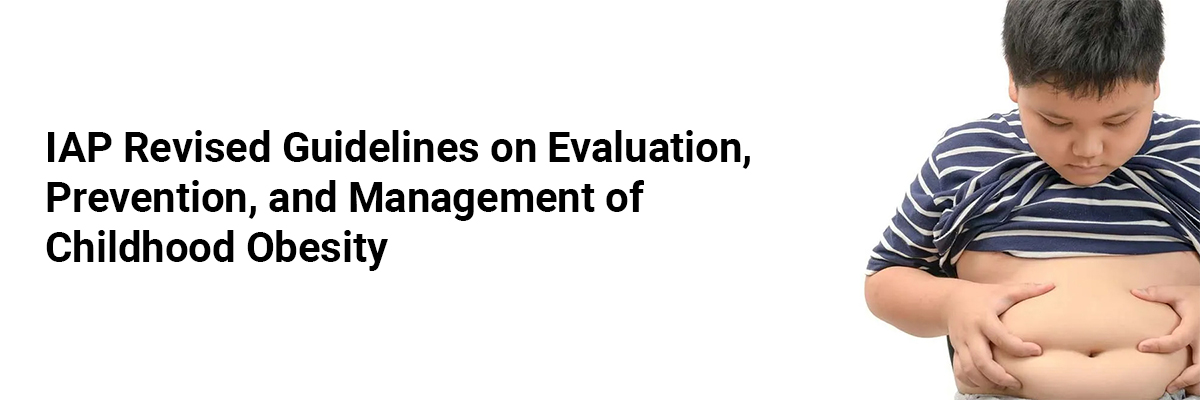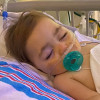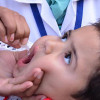
IAP Revised Guidelines on Evaluation, Prevention, and Management of Childhood Obesity
A recent article presented a literature-based review on the burden of childhood obesity, its etiology, and its risk factors to guide recommendations for its evaluation, prevention, and management strategies.
The key recommendations are enlisted below:
Recognition of Pediatric Obesity:
Pediatricians and healthcare providers (HCPs) should acknowledge and address pediatric obesity as a chronic disease characterized by excess or dysfunctional body fat, leading to long-term morbidity and early mortality (Moderate).
Urgent Attention to Rising Prevalence:
The increasing prevalence of infantile, childhood, and adolescent obesity in India, including rural areas, necessitates urgent attention from stakeholders, including HCPs, school authorities, national medical bodies, and policymakers (Strong).
Differentiation and Evaluation of Obesity:
Exogenous or primary obesity is predominant in childhood cases, requiring differentiation from endogenous or secondary obesity as the evaluation and management approaches depend on the cause (Strong).
Comprehensive Assessment of Overweight and Obese Children:
Every overweight and obese child should undergo a detailed history and physical examination, including specific measurements such as BMI, waist circumference, and blood pressure, to identify etiology and associated comorbidities (Strong).
BMI Diagnosis and Monitoring:
In 5-18-year-old Indian children, BMI should be used to diagnose overweight and obesity, with the IAP 2015 BMI charts for plotting. Annual BMI plotting is recommended for children over five years (Moderate).
Waist Circumference Measurement:
Waist circumference should be routinely measured in all overweight and obese children and plotted on India-specific charts as a key measure of cardio-metabolic risk (Strong).
Evaluation for Endocrine Causes and Genetic Testing:
Routine evaluation for endocrine causes is discouraged, except in short and obese children with additional diagnostic clues. Genetic testing is recommended for early or rapid onset obesity (<5 years) with specific criteria (Moderate).
Prevention Strategies:
Prevention efforts for childhood obesity should commence with promoting healthy maternal weight, smoking cessation before pregnancy, appropriate gestational weight gain, and diet. Other measures include exclusive breastfeeding, balanced complementary foods, salt avoidance, and limiting sugar intake (Strong).
Nutrition and Physical Activity Recommendations:
Childhood nutrition should entail a balanced diet, healthy eating patterns, and diverse food groups. Appropriate portion sizes, avoidance of certain food types, and encouragement of age-appropriate physical activity are emphasized (Strong).
Screen Time Guidelines:
Screen time recommendations vary with age, advising no screen time for up to 2 years, limited time for 1-5 years, and 2 hours for 5-10 years. Adolescents (10-18 age group) are encouraged to balance screen time with age-specific developmental goals (Strong).
Management Approaches:
Initial management of pediatric obesity involves lifestyle modification at the primary HCP level. If ineffective after six months, a multidisciplinary team approach is recommended, involving caregivers, pediatricians, specialists, psychologists, and dieticians (Strong).
Dietary and Exercise Interventions:
Interventions for children and adolescents should prioritize weight maintenance initially through culturally acceptable dietary practices and behaviors. Dietary intervention should be individualized based on needs, preferences, and medical conditions (Strong). Exercise interventions tailored to age, gender, and fitness level are recommended (Moderate).
Pharmacotherapy and Surgical Management:
Pharmacotherapy may be considered as an adjunct to lifestyle modifications in adolescents ≥12 years with class 2 obesity and immediate or life-threatening comorbidities. Surgical management may be an option for children older than 12 years with class 2 or 3 obesity and associated comorbidities after a proper trial of lifestyle modifications and pharmacotherapy (Moderate).
These guidelines stress the urgent need for collaborative efforts in addressing the escalating pediatric obesity crisis in India, emphasizing a holistic approach involving healthcare providers, schools, and policymakers.
Source: Khadilkar V, Shah N, Harish R, Ayyavoo A, Bang A, Basu S, Chatterjee S, Chhatwal J, Elizabeth KE, Ghate S, Gupta A. Indian Pediatrics. 2023 Dec;60(12):1013-31.








Please login to comment on this article